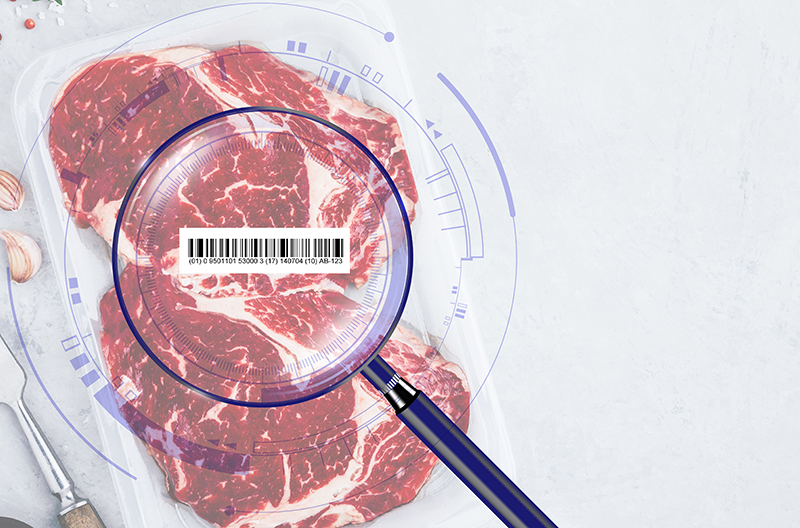Sponsored content

Q&A with Quang Kwok, senior product manager at Invafresh
More than ever before, consumers are demanding more information about the products they consume, where they come from and how they’re prepared. Food traceability is especially important in the world of fresh. Invafresh discusses the role fresh food retail technology plays in end-to-end traceability and reporting and how technology is shaping the future of the industry.

Q: How can technology be used to improve traceability efforts in the grocery industry?
Kwok: Surprisingly, when it comes to food traceability, many in the food system still utilize a largely paper-based system of taking one step forward to identify where the food has gone and one step back to identify the source.
The use of new and evolving digital technologies will play a pivotal role in providing end-to-end traceability from the origin of a contaminated food to its source, in minutes or even seconds, instead of days or weeks.
An easy place to start with is barcodes. New technology has now made GS1 2D barcodes a global standard in 115 countries with over 6 billion transactions every day, bridging the physical and digital worlds to improve user experience and efficiency. With GS1 2D barcodes and solutions in place, grocery retailers can scan backroom products and capture all trace attributes, such as Global Trade Item Numbers, Establishments, vendor, SKU/UPC, batch/lot number, serial number, best before date, expiration date and COO (country of origin).
The industry has set a date to make the transition to accepting GS1 2D barcodes at point-of-sale (POS) – referred to as Sunrise 2027. At some point, all retailers will need to prepare retail POS systems to process 2D barcodes and continue to have efficient checkout capabilities. At minimum, price lookup systems will need to be able to use the GTIN encoded in 2D barcodes.
Blockchain technology is another promising solution for traceability and compliance. It offers an immutable, decentralized ledger that can record every transaction in the supply chain, creating a transparent and secure system. This can help retailers to identify the source of any safety concerns and prevent the spread of contaminated products quickly.
Blockchain food traceability also plays a significant role in reducing the amount of food waste as it enables food retailers to track contaminated produce, identify hotspots and pinpoint where a product was spoiled in a matter of seconds. This information can help ensure that the product doesn’t end up on shelves and that no more products from an identified hotspot are purchased.
Q: What are some of the challenges that grocery retailers face when it comes to traceability and compliance, and how can technology help overcome these challenges?
Kwok: One of the major challenges that grocery retailers face regarding traceability and compliance is the complexity of the food supply chain. Modern food supply chains are often global, involving multiple suppliers, manufacturers, distributors and retailers. This complexity makes it difficult to track and trace products effectively and efficiently, especially in the event of a recall or other safety concerns. According to a study by the Food Marketing Institute, 95 percent of food retailers experience difficulties in implementing effective traceability measures.
Another challenge is the need to comply with various regulatory requirements, such as the Food Safety Modernization Act (FSMA) in the U.S., which requires retailers to have traceability systems in place. Compliance with these regulations is essential for avoiding legal penalties and protecting brand reputation. The FDA has seven new major rules to implement FSMA, one of which requires that certain foods have additional traceability records, which only adds more complexity for retailers.
To overcome these challenges, grocery retailers can leverage technology solutions. For instance, advanced traceability software can help retailers to track and trace products across the supply chain more effectively. These systems can provide real-time visibility into the movement of products and help retailers to quickly identify the source of any safety concerns or quality issues.
Q: What benefits can retailers expect to see from investing in traceability and sustainability technology solutions?
Kwok: Investing in traceability and sustainability technology solutions can bring significant benefits to retailers. One of the biggest benefits that comes to mind is an increase in labor efficiency. For example, automated inventory management systems can track inventory levels in real-time, reducing the need for manual stock checks and enabling employees to spend more time engaging with customers.
The use of workforce management software can also help retailers to optimize scheduling and shift planning, ensuring that the right employees are in the right place at the right time to meet demand. This can help retailers to reduce labor costs while also improving employee satisfaction and retention.
Operationally, with a good traceability solution in place, grocery retailers should see better compliancy, enhanced recall readiness and improved inventory management. Ultimately, by investing in traceability and sustainability technology solutions, retailers can improve their brand reputation and differentiate themselves from competitors, as consumers are willing to pay a premium for products from brands with a strong social and environmental commitment.
Q: When looking for a traceability solution provider, what are some questions to ask?
Kwok: First, it’s important to gain a solid understanding of the requirements and the information that is required for compliance. Once you know your requirements, then putting together a list of questions to ask would be helpful.
Start by asking if the system can effectively trace the link between source products and sellable packages. For example, is the solution able to trace meat grind information from the primal source? Can every ingredient of a sandwich in the deli be traced back to its original source?
Another question to ask is whether the solution is equipped to notify your store when there is a possible recall? Are food recall reports automated to eliminate time consuming manual process?
Some other questions to ask include:
- What segments of the food supply chain does your solution support?
- How does your solution address the requirements in FDA’s Food Traceability Final Rule?
- What key data elements does your solution have the ability to capture?
- How do you capture data that adheres to GS1 standards?
- How do you capture lot code / batch tracking data?
- How is information shared across data platforms and between supply chain partners?
Q: How does Invafresh empower and help grocery retailers meet traceability and compliance regulations?
Kwok: Invafresh offers grocery retailers a USDA-compliant traceability solution that tracks, traces and monitors fresh food movement from point of origin and transformation to retail with real-time data to increase the quality of their products while meeting regulatory requirements.
The Food Traceability module is the ultimate application to streamline operations, reduce labor costs, recover faster from disruptions and food recalls and reduce the risk of contamination. The intuitive, configurable and user-friendly nature of the platform can be adopted quickly and builds employee confidence and engagement in new technology.
Our platform is mobile-centric, enabling store employees with access to accurate just-in-time information, up-to-the-minute communication and instant alerting while operating on the sales floor. As a result, store operators can spend less time in the back room and more time in the front of store improving the consumer experience.
Additionally, our award-winning customer success team of Freshologists work alongside our grocery customers and operators at all levels to empower store employees through quality training and tools from the point of onboarding to adoption and continuous improvement to ensure strong software compliancy and maximum return on investment.
For more information, visit invafresh.com.

